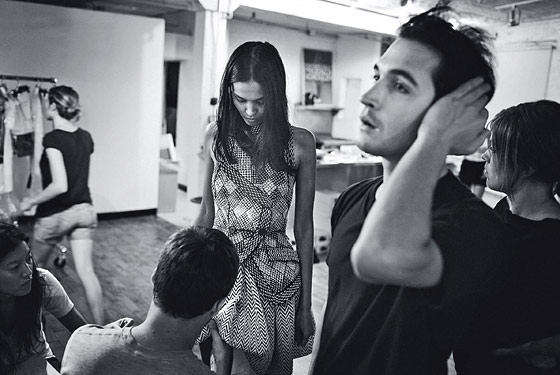
How does a collection come together? How do a 1940s Christian Dior silhouette, Meryl Streep as Karen Blixen, stripey artwork by Louise Bourgeois, and an old Japanese fisherman kimono find their way into the blender that is two designers’ brains and come out as a cohesive, chic, wearable collection that will sell itself off a hanger? For Lazaro Hernandez and Jack McCollough of Proenza Schouler, the process is anything but linear. Inspiration comes from travel, movies, books, and trips to the New York Public Library. But they’re also sensitive to their own psychology; this spring, the double whammy of being almost 30 and having a new corporate parent (Valentino bought 45 percent of their business this year) was present in every decision.
Hernandez: Our collections always happen from a personal place, what we’re feeling. We take that and try to give it form and shape. I guess the idea behind this collection—the way we’re feeling—was that we’re at the crossroads between being adults and kind of being kids. Our friends still want to go out and have fun, and we have a company to run. And there’s something in that feeling we bring to this collection. It’s the contrast between those two worlds, and how does that translate on a more aesthetic level.
McCollough: We’re both 29 now. But you can write 28.
Hernandez: I guess this is the age where your life takes a larger turn, you kind of grow up. So how do you make that into a visual thing?
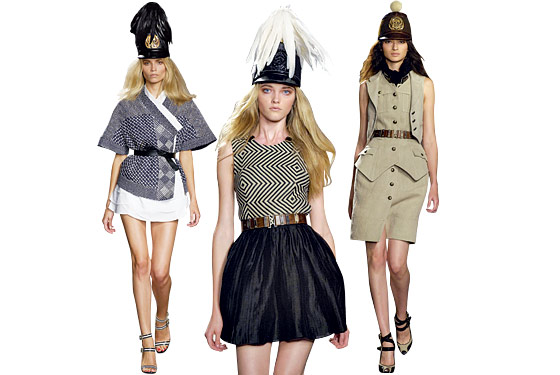
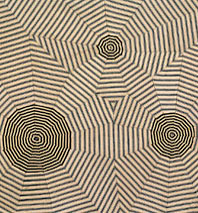
1. LOUISE BOURGEOIS
Hernandez: We always have a lot of art books lying around. We collect art books at this point. We have so many of them.
McCollough: At that museum in Los Angeles, the lacma, I found this really, really great bookstore of kind of obscure books. We always go away after a show, and I just went to L.A. I found that Louise Bourgeois book there.

2. COSTA RICA
McCollough: Wait! We went to Costa Rica!
Hernandez: That’s right. We went to Malpais.
McCollough: That’s right, then I went to L.A. from there.
Hernandez: We went to Costa Rica and stayed in these little shacks on the water, which were amazing. We had the sense of being in something primitive and really organic, straight from the earth. We stayed at a place called Flor Blanca. It’s really, really cool.
McCollough: And contrast that with a certain propriety and classicism that was there. There was a colonialism to the experience, mixed with something more raw. All the fabrics looked like they were soaked in mud and had a sort of animalistic quality.
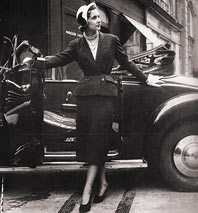
3. CHRISTIAN DIOR NEW LOOK
Hernandez: We had the idea of playing up the contrast, the earthiness against the formality, so we went for the most basic couture silhouette, which is the forties Christian Dior New Look: cinched at the waist, peplum. It’s a really classic mid-century silhouette, so we were like, that’s kind of interesting—the grown-up, polished, mid-century contrasted with the more organic. We wanted something iconic and classic, but then to do it in these more fucked-up textures and surfaces.
McCollough: Also, it’s a silhouette we’d never played with before. It seems so polished. We’re usually much more narrow. We wanted to make these really polished silhouettes out of organic fabrics.

4. OUT OF AFRICA
Hernandez: And then we saw the movie Out of Africa.
McCollough: Yeah, there’s a little bit of Karen Blixen. It was random! We didn’t want to have too much of a safari vibe, but we did see that movie and there were those elements to it: the English, starchy look and the vests.
Hernandez: It kind of put a picture to what we had been thinking. There are the ladies and the gentleman, and all around them you have African tribespeople in these amazing clothes. That gives a look to what we are experiencing: We don’t know which group we belong to. Are we with the tribespeople? Or with the very polished, sophisticated people?
McCollough: The most inspiring thing about that movie for us was probably the color story of those two worlds, how those two worlds coexisted in a harmonious way. It’s just more of that theme of balance and contrast.
Hernandez: We got the first vest back from the factory and realized we liked it more inside out, so we went with that.
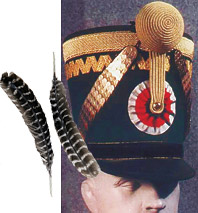
5. FEATHERS AND THE ARMORY
McCollough: The feather was really important to us. That became a motif from both worlds. It’s the most tribal thing, it’s a bird, it’s animal, it’s savage; but it’s also decorative. And it’s couture. Lemarié in Paris, which we worked with for the first time, did the gold feather pieces. They’re hand-painted—such an ordeal. Showing at the uptown armory made us think about incorporating military things too. Like the hats. The higher the better. They balanced the legs.

6. JAPANESE FISHERMAN KIMONOS
McCollough: Sometimes we go to the picture book section at the New York Public Library and see what we stumble across—I found these pictures of antique Japanese fisherman kimonos.
Hernandez: Jack was born in Japan, and he lived there till he was 5, so he’s always interested in that.